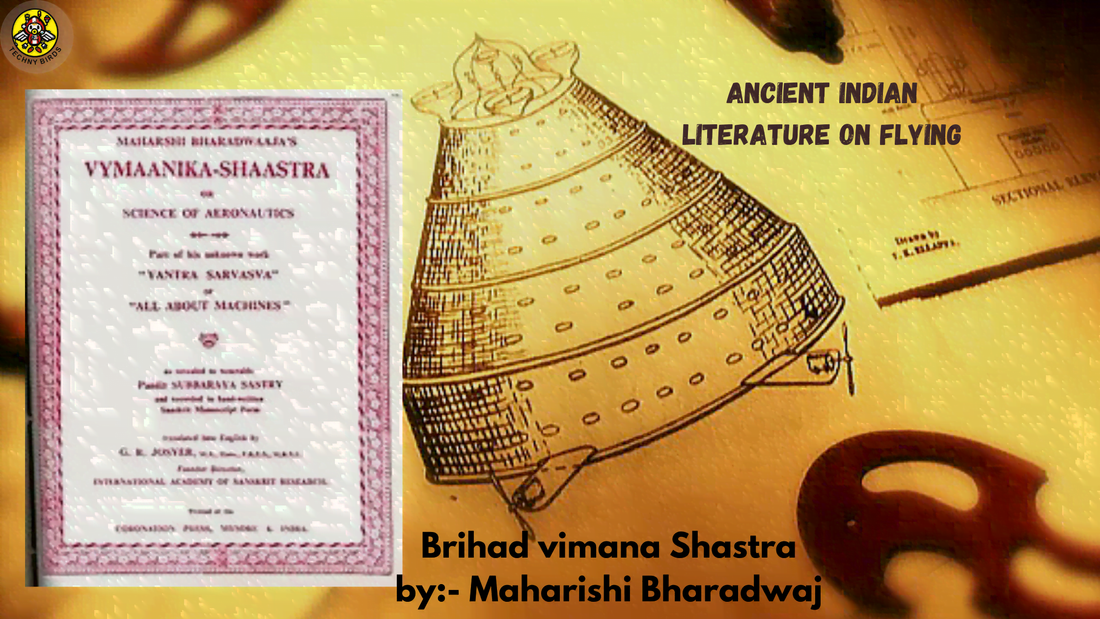
Ancient Indian Literature on flying
Share
An ancient Indian book on flying and spacecraft is Brihad vimana Shastra. which is written by Maharishi Bharadwaj. which has 21 chapters about flying machines.
These machines are categorized into eight classes based on fuels.
Viz. electrical energy, Steam or smoke, propelled by solar energy.
it is always argued that it is not in its original form due to one of the major inclusions is Diagrams of vimanas. Second is the date of this book, still, historians and scientists have to ascertain the so-called Indian mythological period.
The scientists are researching this book. One of the researches done by Prof.Maheswar Sharon from IIT Mumbai can be referred on YouTube https://youtu.be/Oa6Ab-WW-hw vimana Shastra
So, we are not discussing its original form nor its period. We want to bring it to the notice that the quest for flying is far more ancient in comparison to the modern documented history of flying.
Modern History of flying
It goes back from flying kites in china in the 8th century BC. Then the discovery of hydrogen in the 18th century. Leonardo da Vinci sketched Orthinopter, which has bird-like wings to fly.
Montgolfier brothers first flew the balloon on November 21, 1783, in Paris, France.
In 1853 British engineer George Cayley built the world’s first glider. Later in 1890 otto, Lilienthal Of Germany built series of small fragile gliders.
Then came the age of airships, the first flight of Giffard's steam-powered airship took place Sept. 24, 1852 — 51 years before the Wright Brothers' first flight.
Then the famous brothers in the history of flying made the first flight. On December 17, 1903, Wilbur and Orville Wright made four brief flights at Kitty Hawk with their first powered aircraft
The reason behind the popularity of the Wright brothers in the history of flight is due to their scientific approach, which led to the modern science of flight. They have created aerofoil and wind tunnels for their tests. They recorded the lift of aerofoil in different circumstances.
The science behind the flight
The major areas of science are fluid mechanics, Newton's law of motion, Aerodynamics, Bernoulli’s theorem.
Forces of flight
The first force is thrust which moves aircraft in the direction of motion. It can be created by the propeller or jet engine.
The second force is drag it is opposite to the direction of the motion. It is caused by air friction.
The third force is gravity caused by force.
The fourth force is a lift which is generated by airplane wings due to its aerofoil design.
Types of flights
It is categorized based on the ratio between the speed of the object and the speed of light, which is defined in the form of Mach number.
Hypersonic
Supersonic
Transonic
Subsonic
How the lift is generated
the lift can only be generated when a solid body moves in a fluid. when aircraft needs lift it has to move.in reaction to this movement airplane wings (aerofoil) provides lift to the airplane. There are several theories regarding lift. one of the most discussed is Beranuli`s theorem. this states due to a change in the speed of wind this lift is generated.
Now scientist does not support this theory. Other theories are venturi theory and skipping stone theory.
Aerodynamic Forces
Wing geometry definition
How to teach about the principle of flight with STEM Kits
The children always love to play with airplane toys.
They make paper airplanes and fly them. This strong bond for flying toys can be a good entry point for a teacher to teach them its science.
How This aeromodelling kit by Technybirds can be the best toy for associative learning. This kit provides different parts for the wind tunnel test. Any child can put aerofoil in front of a small fan and see how lift is generated. The booklet provided in the kit
elaborates on the forces acting on an airplane. While learning with this kit a child can understand the different parts and their role in flight. A Styrofoam walkalong glider is also provided in this kit. A child can learn to fly walk-along gliders by watching videos on youtube.
A booklet inside this kit tells you how to tweak with different parts for different types of flying.
This STEM Toy Kit is designed to create immense interest in flying and simplify the principles behind it.
